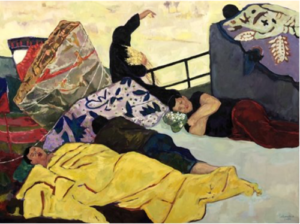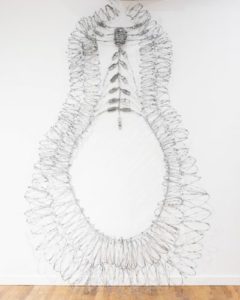Anita Rogers Gallery is thrilled to present The Dreamer, a solo exhibition of work by Syrian painter Anas Albraehe.
The exhibition will be on view June 29 through August 27 at 494 Greenwich Street, Ground Floor in New York City.
The gallery will welcome visitors on the evening of Wednesday, June 29, 6-8pm for a reception.
You can read the poem that accompanies the exhibition here.
Albraehe paints expressive portraits of men asleep – these are laborers and refugees enjoying a brief respite from the day to day. There is a historical precedent for painting sleeping figures – and men in particular (vs the ubiquitous reclining female nude) – artists from Goya to Bacon to Van Gogh have broached the topic. Born in Syria in 1991, Albraehe is a multidisciplinary artist focused on painting and theatre. He graduated with a Bachelor’s degree in Painting and Drawing from Damascus University of Fine Arts in Syria in 2014. After the beginning of the war in Syria, he moved to Lebanon where he obtained a Master’s degree in Psychology and Art Therapy from the Lebanese University in 2015. His recent work combines his interests in the fields of art and psychology to produce a portrait that explores the psychology of color and the gaze of the Other. Albraehe has had solo exhibitions in Paris, Jordan, Beirut, and participated in group exhibitions worldwide. The artist’s work is in the permanent collection of the Museum of the Arab World in Paris (IMA) and he is a member of the French Artists Syndicate. He now lives and works in Beirut.









